Rivian is known for their electric vehicles that are capable of off-road adventures. For these kinds of adventures, you might want to your RV too. But can you flat tow the R1S or R1T? We've researched this, and here's the scoop:
Neither the R1T nor the R1S can currently be flat towed. Instead, they must be towed on a flatbed truck. However, Rivian has shown interest in making these vehicles compatible with flat towing.
There's a lot of conflicting information out there about flat towing these vehicles. In this article, we'll take a closer look at this topic, as well as the approved way to tow your Rivian vehicle, how much they can tow, and more.
Can You Flat Tow a Rivian?
Flat towing is a convenient way to bring along your vehicle behind your RV for road trips and adventures. But can you flat tow the Rivian R1T or R1S? The answer is a little complicated.
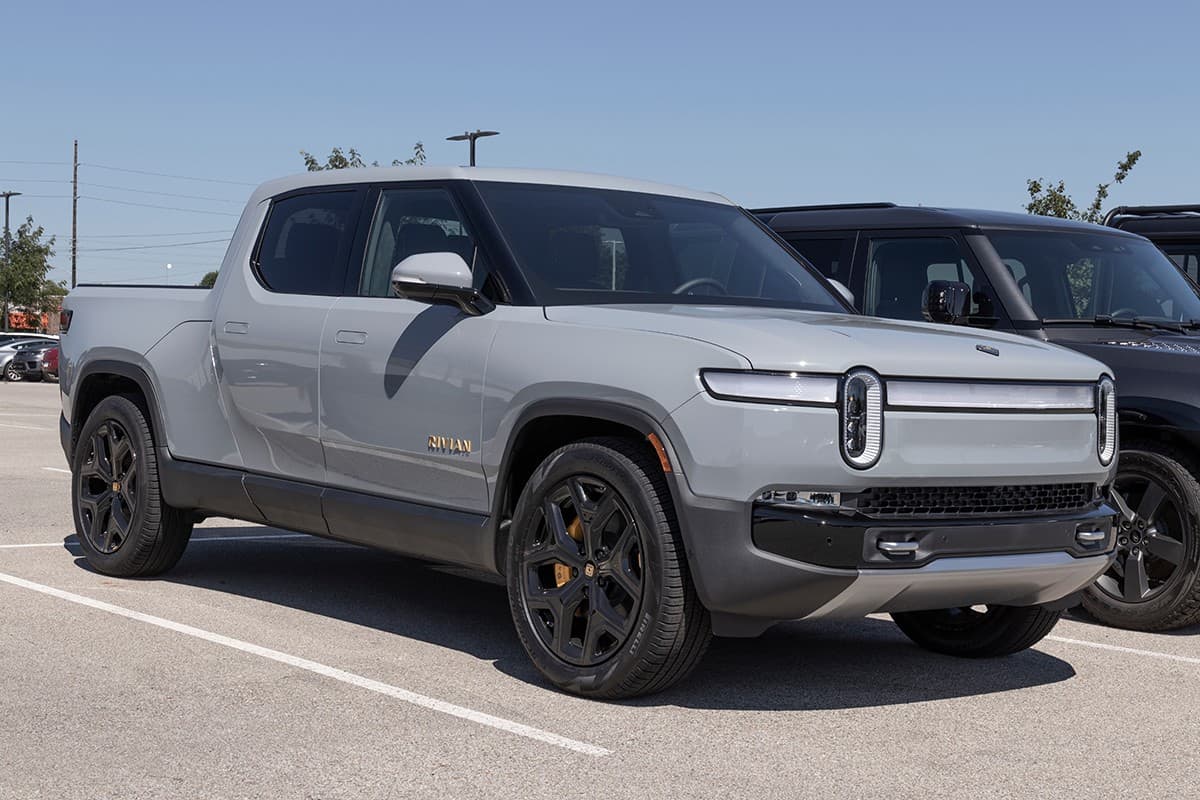
The short answer is: no. At least, not at the time of writing. The most reliable sources we have are the R1S owner's guide, the R1T owner's guide, and the tow operator's guide for both vehicles.
According to all of these guides, you need to tow your Rivian with a flatbed truck. This means that dolly towing is also not approved for Rivian's vehicles currently.
The Long Answer
If you've looked elsewhere for the answer to this question, you may have found conflicting information.
Several blogs have claimed that you can flat-tow Rivians. Of those, only a few have added corrections after publication. This usually appears as an addendum without modifying the original text.
Where did this claim originate? It actually came from Rivian themselves. In April 2019, Rivian tweeted that their vehicles would be compatible with flat towing.
https://twitter.com/Rivian/status/1112479345761615872
This was two years before Rivian started shipping the R1T or the R1S. Currently, the owner's guides say you should only tow either vehicle on a flatbed trailer.
Rivian is clearly interested in making their vehicles flat-tow capable, so they may make that a reality in the future. However, for their current lineup, flat towing is not an option.
How to Tow a Rivian
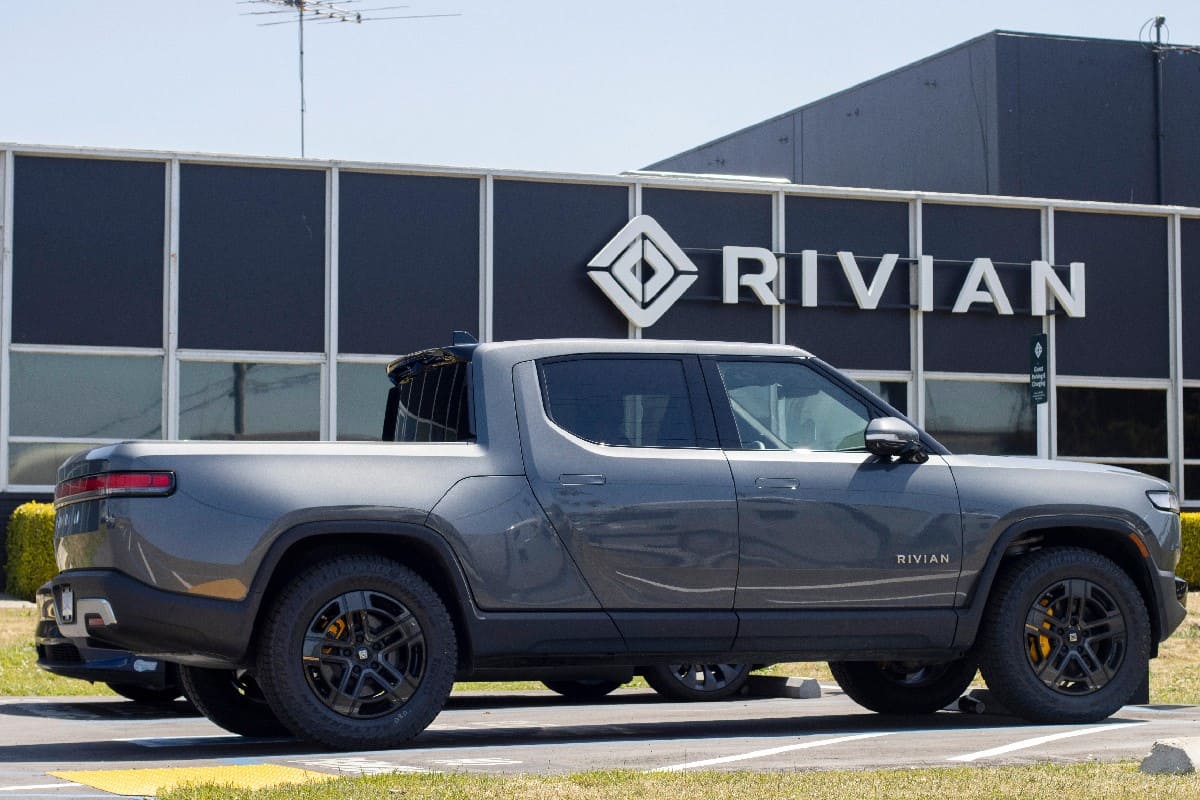
Flat towing might not be an option, but that doesn't mean you can't tow your R1S or R1T! Currently, the only long-distance towing method Rivian outlines in the owner's guide or the tow operator's guide is flatbed towing.
To tow your Rivian this way, you will need to follow these steps:
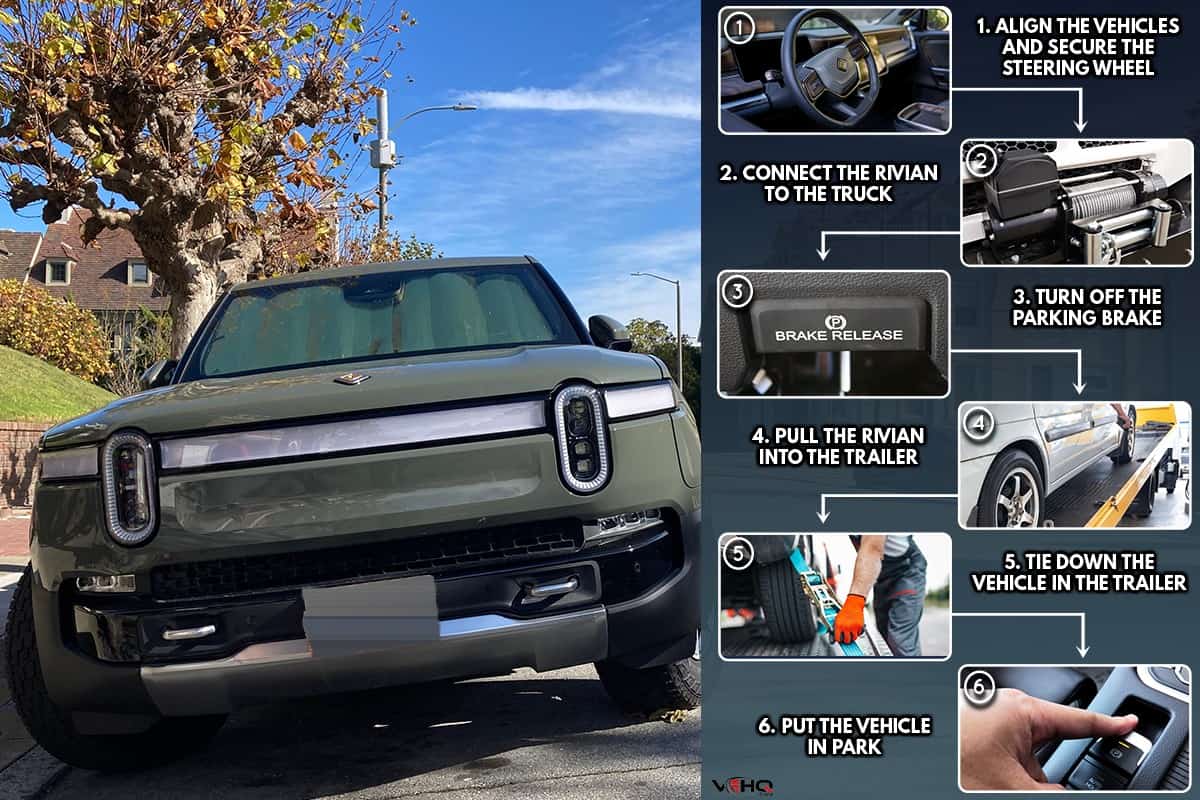
1. Align the vehicles and secure the steering wheel.
Position the flatbed in front of your Rivian. Make sure they are lined up and the front wheels of the Rivian are facing forward.
Then you'll need to secure the steering wheel so it doesn't turn during winching. You can use a holder or a strap to keep it in place.
2. Connect the Rivian to the truck.
Use a nylon bridle or 6' endless loop to connect the front control arms of the Rivian to the truck winch.
3. Turn off the parking brake.
While holding down the brake pedal, click on Settings > Vehicle > Service > Park brake release on the display, then release the pedal.
The brake will stay off for 15 minutes unless you put the vehicle in Park or turn off the park brake release on the display.
4. Pull the Rivian into the trailer.
Using the truck winch, slowly pull the Rivian into the trailer. Don't exceed speeds of 5 mph for safety and to avoid damaging the drivetrain.
5. Tie down the vehicle in the trailer.
Secure the vehicle with eight-point retention straps. There should be two points of contact in each corner.
6. Put the vehicle in park.
Now that your Rivian is secure, you should put it in Park. If your Rivian is not at the lowest drive height, click on Drive Modes > Conserve then choose Lowest for ride height.
For journeys over 50 miles, you can preserve your battery charge by setting it to Vehicle Shipping Mode.
How to Tow Rivian When Battery is Dead
If the battery to your R1S or R1T is dead, you might not be able to turn off the parking brake. Because of this, you will need to lift the rear wheels before you can load them into a flatbed.
In this case, you can follow the same instructions as above, but you will need to load the rear wheels in a dolly, skate, or another device before loading it.
How to Tow Rivian From Behind
If you can't position the flatbed in front of your Rivian, you can also load it from behind. In this case, you will use the tow hitch instead of the control arms to connect to the winch.
First, remove the cover from the tow hitch. Next, put your nylon bridle or short endless loop into the hitch. Secure it in place with the tow pin and clip. Then follow the same directions as above to load and secure your Rivian.
Can You Tow a Rivian With an RV?
While flat towing might not be an option at the moment, you may wonder if you can tow a Rivian behind your RV if you have a flatbed trailer.
The towing instructions for the R1S and R1T that Rivian outlined in their owner's and tow operator's guides are intended for using a flatbed tow truck.
That being said, if you have a flatbed trailer and RV that can handle the weight, you should be able to tow your Rivian in the same way. The most important factor to consider is weight.
The R1S has a GVWR of 7,650 pounds, while the R1T has a GVWR of 8,532 pounds. A flatbed trailer that can handle that weight is going to be heavy as well. You will need a powerful RV to pull all of that weight.
Why Can't You Flat Tow Electric Vehicles?
Currently, there aren't any fully electric vehicles on the market that are flat-tow compatible. The majority of gas-powered vehicles on the road today also aren't able to be flat-towed.
This is because you need to be able to go into a true neutral to flat tow without damaging the mechanical components of a vehicle.
While all vehicles have a neutral mode, they aren't a true neutral in the sense that the wheels are still connected to other mechanical components. If the wheels are turning, those components will turn too.
Flat towing an electric vehicle is likely to cause severe damage to the motor and other components. For this reason, you shouldn't attempt to flat tow an electric vehicle unless the manufacturer has expressly approved it.
How Much Can a Rivian Tow?
In its current form, you can't flat-tow either the R1T or the R1S behind an RV. But what about the other way around?
Rivian is producing some of the highest-performing electric vehicles when it comes to towing capacity.
The R1S has a maximum towing capacity of 5,000 pounds with a standard hitch and 7,700 pounds with a weight-distribution hitch.
The R1T is even more impressive, with a maximum of 11,000 pounds with a weight distribution hitch. It has the same 5,000-pound capacity with a standard hitch.
How Many Miles Can a Rivian Tow?
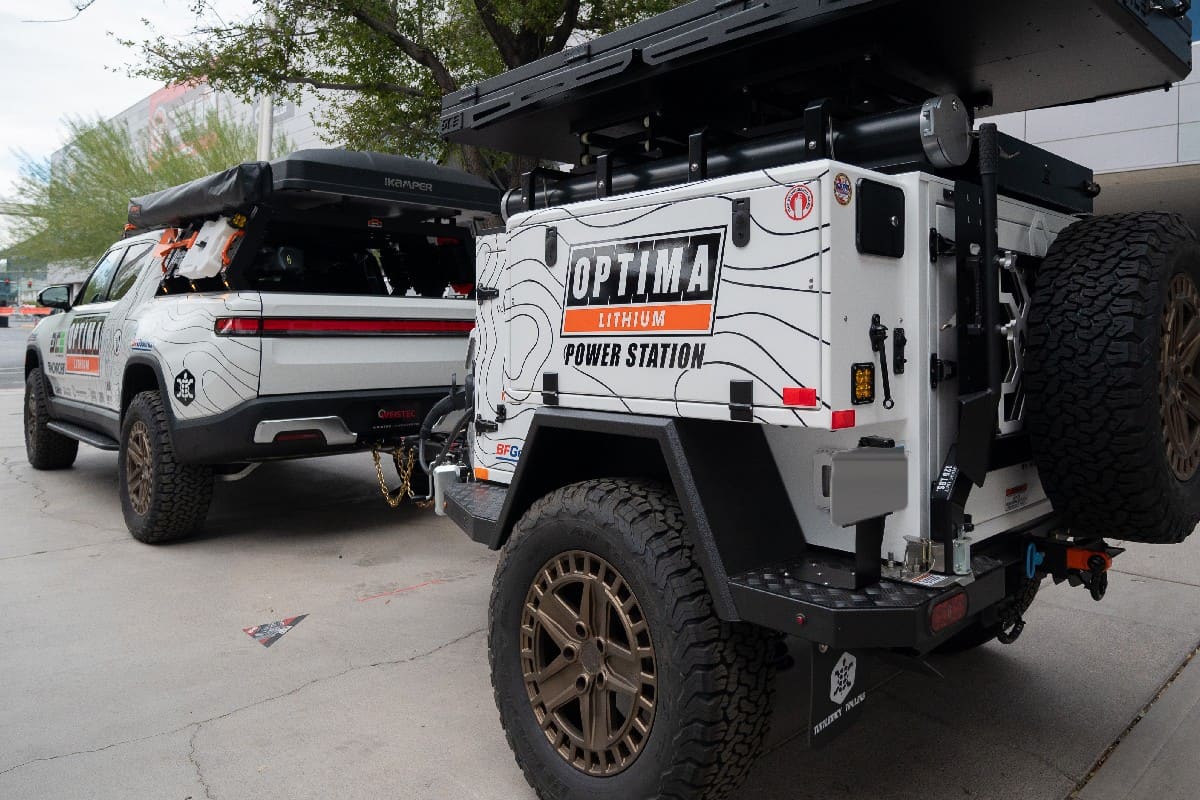
Towing with a gas-powered vehicle will reduce your fuel economy. Towing with an electric vehicle, on the other hand, will reduce your range.
The extent of the reduction will depend on how much weight you tow. If you tow the maximum weight, you should expect your range to decrease by around 50 percent.
The maximum range for the R1T falls between 260 and 400 miles. While towing at capacity, that range would be reduced to 130 to 200 miles.
The R1S has a maximum range from 260 to 320 miles. If you are towing at capacity, that range will fall to 130 to 160 miles.
Because of the lost range while towing, it is especially important that you plan out any long routes to make sure you have adequate access to places to charge.
How Fast Does the Rivian Charge?
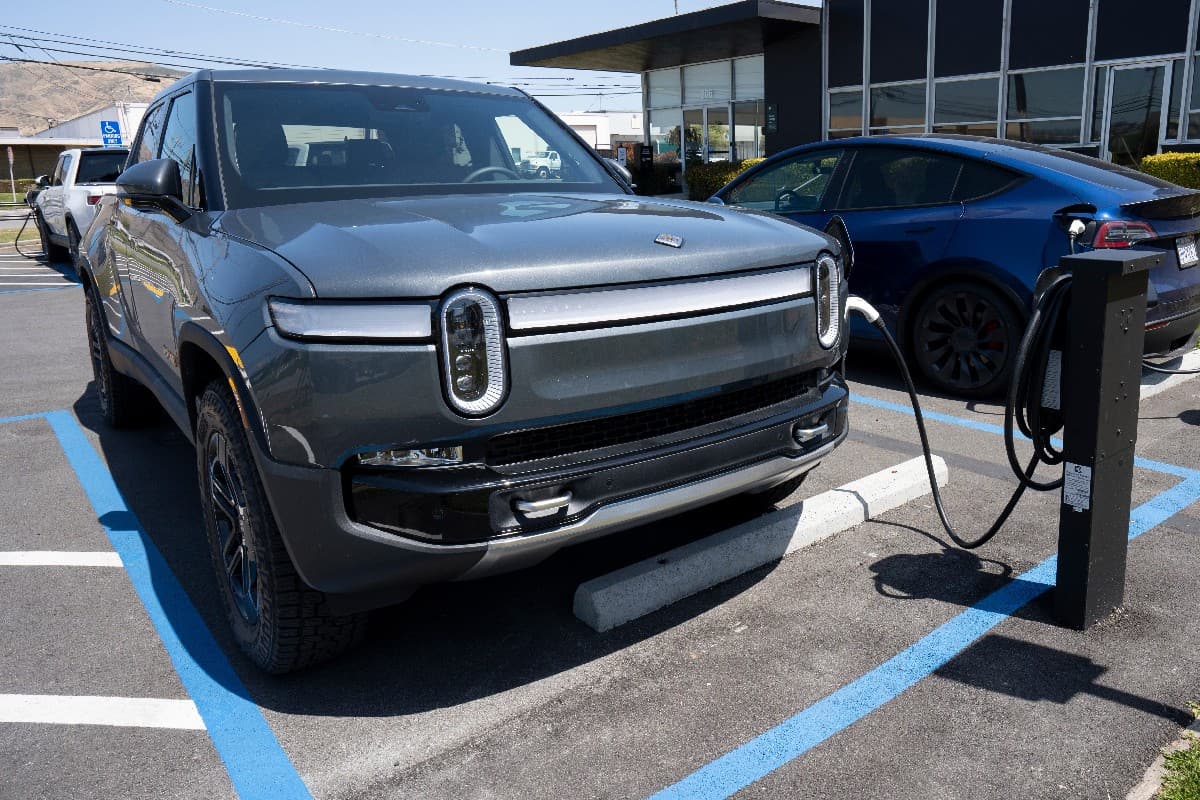
It's crucial to keep your Rivian well-charged for longer road trips and while towing. But how quickly can you charge your Rivian?
The answer will depend on how you are charging it. Rivian identifies three levels for charging.
Level 3 is the fastest. This level is specific to DC charging stations. Currently, these stations can charge 140 miles (70 for towing) in just 20 minutes!
The times for DC charging stations are also improving. Even over-the-air updates are able to improve DC charging. A recent OTA update improved Rivia's DC charging by 7 percent.
You can access DC charging at Rivia Adventure Network as well as other DC charging stations. You can find a map of charging stations, including DC fast stations, at Energy.gov.
Level 2 is quite a bit slower, better for short trips or overnight charging. This level includes public charging sites, Rivia Wall Chargers, Rivia Waypoints Chargers, or the Rivian Portable Charger plugged into a 240V outlet.
At level 2 charging, you can expect 16 to 25 miles (8 to 12 for towing) of range per charging hour.
Level 1 is the slowest. It is useful for topping off when you only have access to standard outlets. You can charge a few miles of range per hour using the Rivian Portable Charger in a 120V outlet.
Final Thoughts
The R1T and R1S are both charting new territory for electric vehicles when it comes to power, off-roading capabilities, and more. At the moment, they are not yet flat-tow compatible, but we may see this function in the coming years.
Now you know how to tow your Rivian, how much weight your Rivian can tow itself, and how towing affects its battery's range. We also saw how quickly the batter can charge and some resources to find fast chargers near you.
If you've found this article helpful, check out these great posts:
